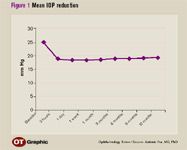Article
Micropulse laser trabeculoplasty seems to reduce IOP associated with OAG
Micropulse laser trabeculoplasty seems to be effective in reducing the IOP that previously could not be controlled medically in eyes with open-angle glaucoma.

Key Points

"The mechanism of action of laser trabeculoplasty is poorly understood," he said, "but the most recent hypotheses point toward a responsive cellular biochemical cascade that could only occur in viable cells activated, but not killed, by a non-lethal thermal insult directly applied, as in the case of MLT, or derived from higher and lethal photothermal elevations produced by the laser in adjacent cells as in the case of argon laser trabeculoplasty." Dr. Fea is the Aggregate Professor, Department of Clinical Physiopathology, ophthalmology section, University of Turin, Turin, Italy.
The study included 32 eyes of 20 consecutive patients with OAG. All patients had IOP that exceeded 22 mm Hg, had not undergone a previous glaucoma surgery or had severe visual field defects, and had been receiving maximal medical therapy.

IOP values were measured preoperatively and at 3 hours, 1 day, 1 week, and 3, 6, 9, and 12 months postoperatively. After laser application, the patients continued with their medical regimens.
The criteria for successful laser treatment were a decrease in IOP of more than 3 mm Hg and an IOP less than 21 mm Hg during the first week after treatment. Treatment failure was defined as an IOP exceeding 21 mm Hg or an IOP decrease of 3 mm Hg or less during follow-up, he said.
"The mean IOP of 24.7 mm Hg had a prompt and significant decrease [p <0.01] that was maintained during 12 months of follow-up," Dr. Fea said. The mean IOP values at 3 hours, 1 day, 1 week, and 1, 3, 6, 9, and 12 months, respectively, were 20.1, 19.6, 18.7, 18.9, 19.2, 19.2, 19.3, and 19.5 mm Hg.
Treatment was considered a success in 24 of the 32 study eyes. In the remaining eight eyes, six eyes that had a mean IOP of 25.3 mm Hg at baseline did not respond to treatment during the first week, and the IOP decrease was not maintained at the 6-month examination in the two eyes of one patient.
When the 24 eyes were analyzed by the number that reached various levels of reduction in IOP (less than 20%, between 20% and 29%, and 30% or more), 16 experienced an IOP decrease of 20% or more (mean, 22%).





